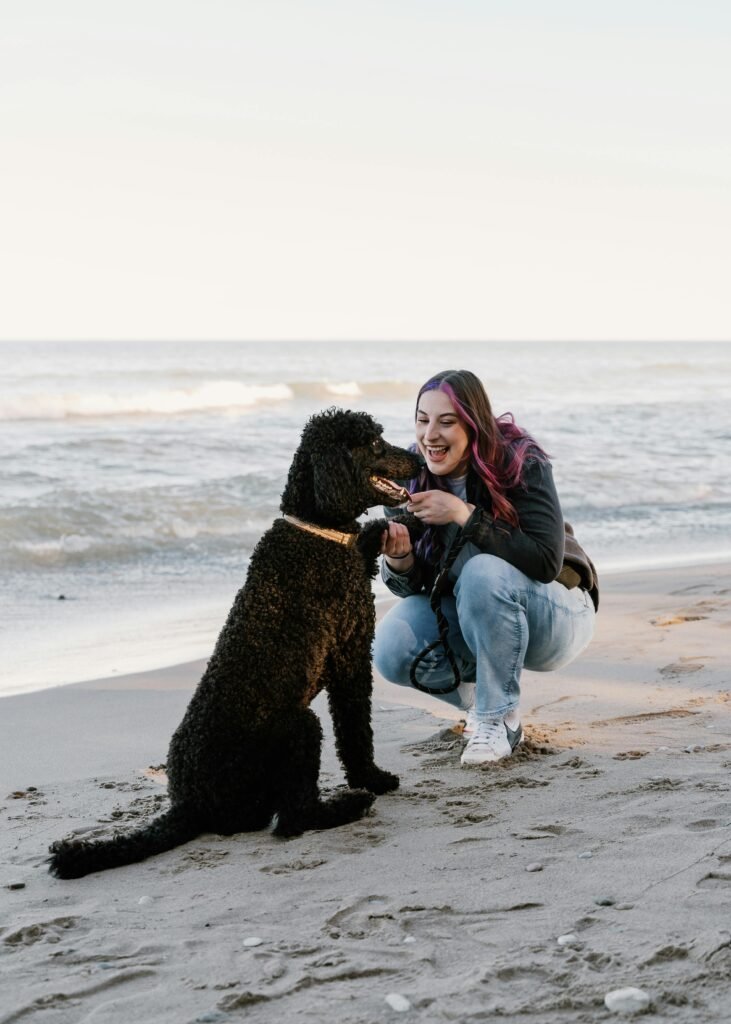
A Guide to Medium Dog Crate Sizes
Are you in need of a dog crate but unsure which size is best for your furry friend? Look no further! This guide is here to help you navigate through the world of medium dog crate sizes, ensuring your four-legged companion has the perfect fit. Whether you’re looking for a crate for training, traveling, or just providing a cozy den for your pup, we’ve got you covered. So, let’s explore the options and find the ideal medium dog crate size for your beloved pet.
Find products like these on Amazon!
Factors to Consider
When it comes to choosing a medium dog crate, there are several factors that you need to consider. These factors will help ensure that you select the right crate for your furry friend, providing them with a comfortable and secure space.
Breed Size
The size of your dog plays a crucial role in determining the appropriate crate size. Medium-sized dogs typically weigh between 30 to 60 pounds and stand around 18 to 24 inches tall. However, it’s important to note that the breed size can vary, so it’s always a good idea to consult a veterinarian or reference reliable sources to determine the average size for your dog’s specific breed.
Weight and Height
In addition to considering the general breed size, you should also take into account your dog’s individual weight and height. These measurements will help you choose a crate that provides enough space for your dog to stand, turn around, and lay down comfortably. It’s essential to measure your dog accurately to ensure that the crate is neither too small nor too large.
Activity Level
Another factor to consider when selecting a medium dog crate is your dog’s activity level. If your dog is highly active and energetic, you may want to choose a crate that is more durable and sturdy, such as a wire crate. On the other hand, if your dog is calmer and less prone to escaping, a soft-sided crate may be a suitable option.
Types of Medium Dog Crates
There are several different types of crates available for medium-sized dogs. Each type offers its own set of advantages and considerations, so it’s important to understand the differences before making your decision.
Wire Crates
Wire crates are a popular choice for many dog owners. They provide excellent ventilation and visibility for your dog, allowing them to see their surroundings and feel included in their environment. Wire crates are also typically collapsible, making them easy to transport and store when not in use.
Plastic Crates
Plastic crates are another option to consider. They are lightweight, sturdy, and provide a more enclosed space for your dog. Plastic crates often come with a metal door for added security and can offer a comfortable and cozy environment for your medium-sized dog.
Soft-Sided Crates
Soft-sided crates are a great option if you need a portable and lightweight crate for your medium dog. These crates are typically made of fabric materials, making them easy to fold up and carry. Soft-sided crates are ideal for traveling and camping trips, providing a comfortable and familiar space for your dog.
Crate Furniture
If you’re looking for a stylish and practical option, crate furniture may be the perfect choice for you. These crates are designed to blend in with your home decor, often doubling as end tables or nightstands. Crate furniture provides your medium-sized dog with a secure and comfortable space while also adding an elegant touch to your living area.

This image is property of images.pexels.com.
Find products like these on Amazon!
Choosing the Right Size
Selecting the right size for your medium dog crate is crucial to ensure your dog’s comfort and well-being. Taking accurate measurements and considering your dog’s specific needs will help you make an informed decision.
Length and Height Measurements
To determine the appropriate crate size, you’ll need to measure your medium-sized dog’s length and height. Measure from the tip of their nose to the base of their tail to determine the length, and from the floor to the top of their head to determine the height. Add a few inches to each measurement to ensure that your dog has enough space to move around comfortably.
Comfort and Space
It’s important to remember that your dog’s crate should provide a comfortable and safe space for them. Consider their sleeping habits and provide enough room for them to stretch out and relax. While it’s tempting to choose a crate that is cozy and snug, it’s crucial to allow your dog enough space for movement and comfort.
Medium Dog Breeds and Recommended Crate Sizes
Different dog breeds have varying sizes and requirements, so it’s essential to match your medium-sized dog with the appropriate crate size. Here are some common medium-sized breeds and their recommended crate sizes:
Cocker Spaniel
Cocker Spaniels typically weigh between 25 to 30 pounds and stand around 15 to 17 inches tall. For a Cocker Spaniel, a medium-sized crate with dimensions of approximately 30 inches in length, 19 inches in width, and 21 inches in height would be suitable.
Beagle
Beagles range in weight between 20 to 30 pounds and stand around 13 to 15 inches tall. For a Beagle, a crate with dimensions of approximately 36 inches in length, 23 inches in width, and 25 inches in height would be appropriate.
Bulldog
Bulldogs can weigh between 40 to 50 pounds and stand around 12 to 16 inches tall. Due to their unique body structure, Bulldogs may require a crate with dimensions of approximately 42 inches in length, 29 inches in width, and 30 inches in height to ensure their comfort.
Australian Shepherd
Australian Shepherds typically weigh between 30 to 60 pounds and stand around 18 to 23 inches tall. For an Australian Shepherd, a medium-sized crate with dimensions of approximately 42 inches in length, 28 inches in width, and 31 inches in height would provide enough space for them.
Border Collie
Border Collies have a weight range of 30 to 55 pounds and stand around 18 to 22 inches tall. A crate with dimensions of approximately 42 inches in length, 28 inches in width, and 31 inches in height would be suitable for a Border Collie.

This image is property of images.pexels.com.
Additional Features to Consider
When selecting a medium dog crate, there are some additional features you may want to consider to ensure your dog’s comfort and convenience.
Divider Panels
Divider panels can be a helpful accessory, especially if you have a puppy or a dog that is still growing. These panels allow you to adjust the size of the crate as your dog grows, ensuring that they always have an appropriate amount of space.
Double Doors
Crates with double doors provide convenient access for both you and your dog. They allow for more flexibility in crate placement and make it easier to clean and maintain the crate.
Foldability and Portability
If you frequently travel with your medium-sized dog or need to store the crate when not in use, consider a crate that is foldable and portable. This feature allows for easy transportation and compact storage.
Removable Trays
Cleaning your dog’s crate is essential for maintaining a hygienic and odor-free environment. Look for crates with removable trays that allow for easy cleaning and maintenance.
Determining Crate Size for Puppies
When choosing a crate for a puppy, there are specific considerations to keep in mind due to their growth rate and expected adult size.
Expected Adult Size
To determine the appropriate crate size for a puppy, you’ll need to estimate their expected adult size. Research the average size for their breed and choose a crate that will provide enough space for them at their full-grown size.
Growth Rate
Puppies grow rapidly, and it’s essential to consider their growth rate when selecting a crate size. Ideally, you’ll want to choose a crate that can accommodate their current size while leaving room for growth. A divider panel can be especially useful during this stage to gradually increase the space as your puppy grows.
Using Crate Dividers
Crate dividers can help you adjust the size of the crate to accommodate your growing puppy. By partitioning off a smaller section of the crate, you can create a cozy space that still allows freedom of movement for your puppy.

This image is property of images.pexels.com.
Importance of Proper Sizing
Choosing the correct crate size for your medium-sized dog is of utmost importance for several reasons.
Safety and Security
A properly sized crate ensures the safety and security of your dog. A crate that is too small can be uncomfortable and restrictive, causing your dog unnecessary stress and anxiety. On the other hand, a crate that is too large can lead to accidents or injury if your dog gets tossed around during travel or tries to escape.
Reducing Anxiety and Stress
Providing your dog with a crate that fits them properly can help reduce anxiety and stress. Dogs naturally seek out small, enclosed spaces for comfort and security. By choosing a crate that provides just enough space for your medium-sized dog to feel safe, you can create a calming environment that helps them relax and feel at ease.
Promoting House Training
Using a crate as a tool for house training is a common practice. A crate that is the right size encourages your dog to hold their bladder and bowels, as they are less likely to soil their sleeping area. This promotes good bathroom habits and can help expedite the house training process.
Crating Tips for Medium Dogs
When introducing your medium-sized dog to their new crate, there are some tips that can help the process go smoothly.
Gradual Introduction
It’s important to introduce your dog to their crate gradually. Start by placing their favorite toys or treats inside the crate to entice them to explore. Allow them to go in and out of the crate at their own pace, and reward them with praise and treats when they make positive associations with the crate.
Positive Reinforcement
Positive reinforcement is key when crate training your medium-sized dog. Use treats, praise, and affection to reward your dog whenever they willingly enter or stay in their crate. This will help them form positive associations and view the crate as a safe and pleasant space.
Proper Crate Placement
Where you place your dog’s crate can have a significant impact on their comfort and acceptance of the crate. Position the crate in an area where your dog can still feel connected to their family, such as a living room or bedroom. Avoid placing the crate in a secluded or isolated area, as this can increase feelings of anxiety or loneliness.
Establishing a Routine
Establishing a routine is crucial when crate training your medium-sized dog. Use consistent feeding and bathroom schedules to help regulate their bodily functions. This will ensure that your dog has ample opportunities to relieve themselves outside of the crate and prevent accidents inside the crate.
Common Mistakes to Avoid
While selecting and using a medium dog crate, there are some common mistakes that should be avoided.
Choosing a Crate That’s Too Small
One of the most significant mistakes dog owners make is selecting a crate that is too small for their medium-sized dog. Choosing a crate based solely on your dog’s current size without considering their expected adult size can lead to discomfort and restrict their movement.
Neglecting to Measure Properly
Accurate measurements are essential when selecting a medium dog crate. Neglecting to measure your dog’s length and height properly can result in a crate that is either too big or too small. Taking the time to measure your dog accurately will ensure that you choose a crate that fits them perfectly.
Not Considering Growth Potential
Puppies grow quickly, and it’s important to choose a crate size that can accommodate their growth. Failing to consider their growth potential can result in the need for a larger crate in the near future, leading to additional expenses and inconvenience.
Conclusion
Choosing the right medium dog crate is a critical decision for any dog owner. By considering factors such as breed size, weight, height, and activity level, you can select a crate that provides your furry friend with a safe and comfortable space. Taking accurate measurements and considering your dog’s comfort and space requirements will help ensure that you choose the correct crate size. By following proper sizing guidelines and considering additional features, such as divider panels and double doors, you can create a positive and secure environment for your medium-sized dog. Remember to introduce the crate gradually and use positive reinforcement to help your dog form positive associations with their crate. By avoiding common mistakes and prioritizing safety and comfort, you can ensure a successful and enjoyable crating experience for both you and your medium-sized dog.
Find products like these on Amazon!







-
-
2 days
Tagged Crate training, dog crate, pet supplies